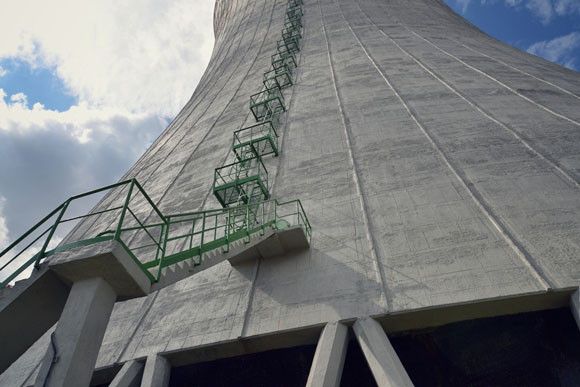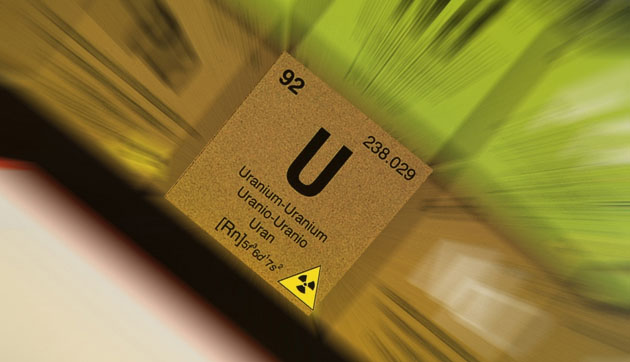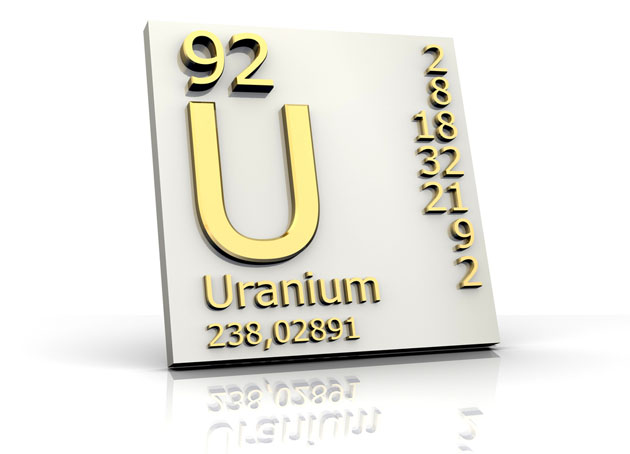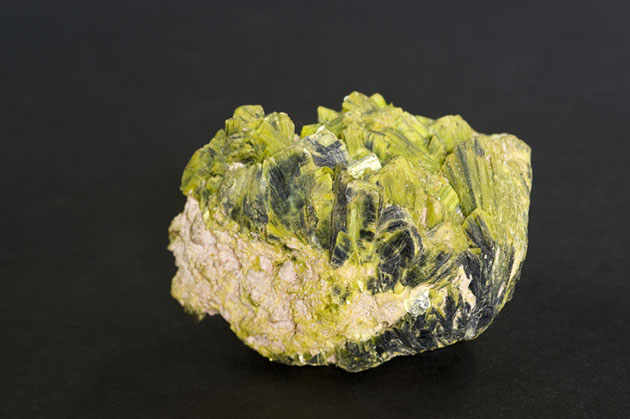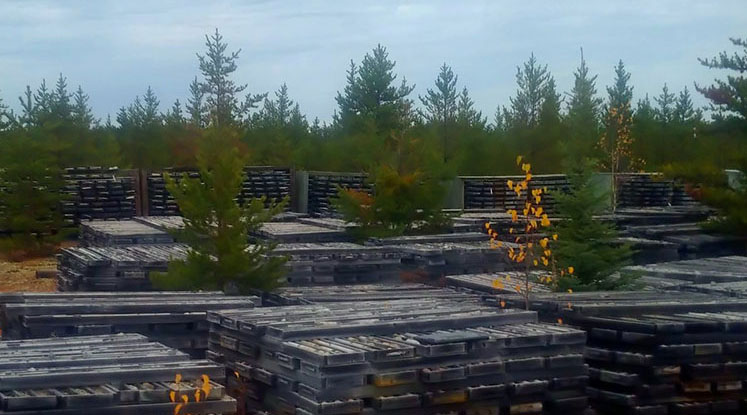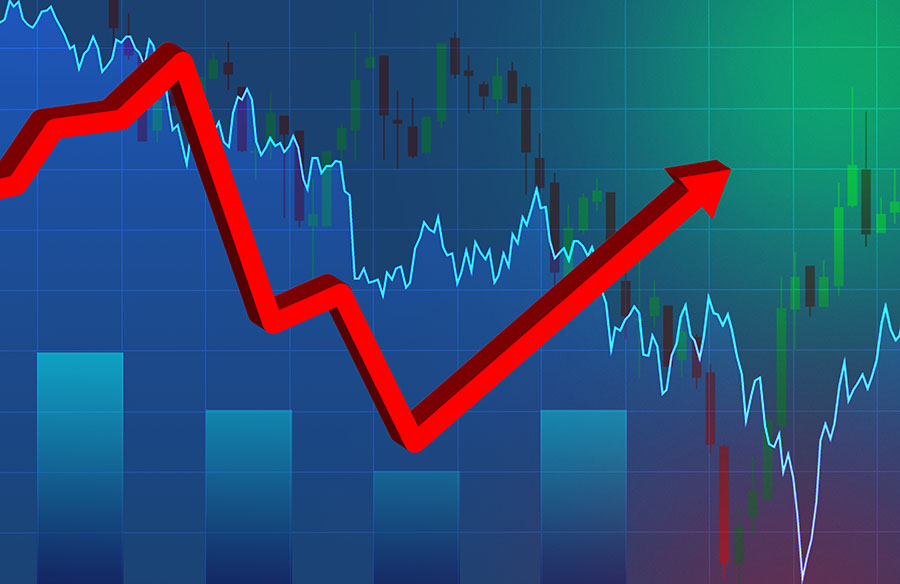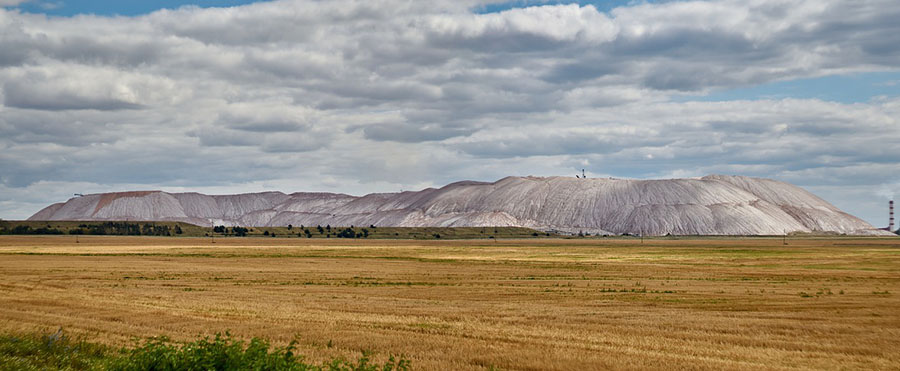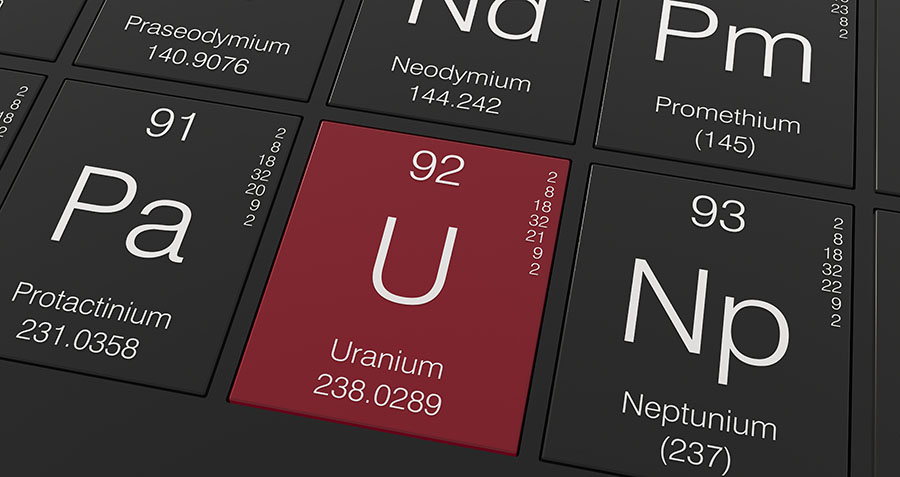TICKERS: AGE, AREVA, MAW; MWSNF; MRY, MGA, PDN, PLU, RVD, RGT, UWE; UWEFF, TUE
Philip Williams: Japan's Tsunami Crisis Creates Uranium Opportunities
Interview
Source: Brian Sylvester of The Energy Report (10/11/11)
The uranium market is still shell-shocked from the tsunami in Japan and the resulting anti-nuclear backlash. But Philip Williams, vice president of business development for investment firm Pinetree Capital in Toronto, is urging investors to dust themselves off and start shopping. Strong fundamentals are still in play and upcoming catalysts could boost suffering uranium equities this year. In this exclusive interview with The Energy Report, Williams discusses which companies he expects will ride the updraft.
Philip Williams: Despite the events at the Fukushima plant, the first reason to invest in the sector is that demand fundamentals are still in place. Notwithstanding what we're seeing in Germany and Japan—and maybe to a lesser extent Switzerland—we're still seeing major countries driving their nuclear build-out on pace with continued growth in the space. All of the main driver countries, such as China, India, Korea, the Middle East and Russia, have all reaffirmed their need for nuclear power in their energy mix.
Since the accident in Fukushima, 10 reactors have stopped operating out of 443. Reactors under construction have increased by three and there have been three new starts. The planned reactor base has gone up by 13 from 142, and proposed reactors increased by 19 from 322.
Also, uranium equities are very cheap. For example, Paladin Energy Ltd. (PDN:TSX; PDN:ASX) is a stock that was up to $10 in the heyday of uranium, but today it's just over $1.60. It just did an equity financing at $1.20. The stock hasn't seen these levels since 2005.
As for the uranium spot price itself, although we've seen it rise and fall dramatically, it is still well above where it was in 2005. We're getting closer to the original conditions that drove price increases, specifically the end of the HEU program, which currently fills the gap between primary supply and demand.
TER: What is your outlook for uranium through 2012?
PW: I think I'll take a lesson from my last prediction and forego a price forecast, but I certainly think the price is going to increase. It's sitting in the low $50s/lb., but it's possible we could be up to $60/lb. by the end of the year. Next year, I expect volatility in the price.
The price should go sideways, trending up between now and the end of next year. I believe there is still potential for pre-Fukushima levels. Chinese buying was the driver to push prices close to $70/lb. There is a possibility that they will come back to the market at some point. As they develop more reactors and get closer to construction, they're going to build inventory, and they'll buy a decent slug of material. That could be a catalyst to take the price even higher, with the possibility for a spike.
TER: What are three things that you believe investors should know about investing in uranium companies?
PW: The number-one thing that people should know is that this is a very hard sector for juniors. Time and time again, companies that are developing projects get delayed, politics get in the way or they have technical challenges. But this also speaks to the opportunities.
There are no easy projects in the uranium space. On one hand, this means supply shortages are a definite risk, in which case the price will move ahead. Investors need to pay special attention to jurisdictions. There are pro-uranium jurisdictions and there are anti-uranium jurisdictions. Projects can and will move ahead on that basis. Finally, consider where companies are in their development timeline, keeping in mind that timelines are long in this sector.
The most fundamental thing that investors should understand about investing in uranium is that these are strategic resources in the sense that the product is critical to run the fleets of reactors around the world that keep the lights on.
TER: Have you added to your uranium positions in the lows since the tsunami, or are you sitting tight with cash in hand and waiting for further market weakness?
PW: We've selectively added to our positions, adding quite a few last summer through the beginning of the year as the price of uranium rebounded to the $70/lb. level. Our positions are sizable, north of 10% in a number of uranium companies. We'll continue to be opportunistic, looking for cheap opportunities. As people come back into the junior resource market, we'll be there and we'll continue to add on the way up.
TER: What are some names you have added?
PW: We added to and would continue to look to add U3O8 Corp. (UWE:TSX.V), a South American uranium exploration story with three main projects in Guyana, Colombia and Argentina. The company is going to end the year with 50 million pounds (Mlb.) of resources across these three projects. It's doing a lot of good work and its team understands metallurgy and process well.
A core holding for us is Mega Uranium Ltd. (MGA:TSX), a development story in Western Australia.
We own more than 10% of Mawson Resources Ltd. (MAW:TSX; MWSNF:OTCPK; MRY:Fkft). We haven't added to that position just yet, but there's definitely a reason to consider it. Mawson is a gold company, but hidden behind its Rompas gold project in Finland, it has a very nice portfolio of uranium projects, including another project in Finland where it put out drill results that rival the Athabasca Basin. It just hasn't gotten any attention for those other projects because of the exciting gold grades it's been delivering at Rompas.
TER: Is there a chance that Mawson might spin its uranium assets out into another company?
PW: There's always a chance. I think that that would make a lot of sense. Rompas is a gold project. Notwithstanding that, it has extremely high-grade uranium at the surface; the potential value of the gold there makes it a gold company. The other projects, especially the ones in Finland, are a portfolio it acquired from AREVA (CEI:PAR). While those projects are very interesting, they won't become the focus in Mawson's portfolio because they're competing against Rompas. So yes, a spinout would make a lot of sense.
TER: Given that there's uranium in the Rompas deposit, is the gold potentially radioactive?
PW: BHP Billiton Ltd.'s (BHP:NYSE; BHPLF:OTCPK) Olympic Dam, the mother of all uranium projects, is a gold and copper project. I don't see any issues with that. Anecdotally, it shouldn't be an issue for Mawson.
TER: What is the other company you wanted to mention?
PW: Titan Uranium Inc. (TUE:TSX), a U.S. developer with a 30 Mlb. resource in Wyoming, which is a previously producing mine. Titan doubled the resource earlier this year and submitted a number of its permit applications. An updated prefeasibility study is coming. We expect the economics of this project relative to where it trades in the market today will prove quite compelling.
TER: There certainly is a lot of room for upside. That stock is trading at about $0.15 right now, down a little bit from its high this year.
PW: I think it's an excellent entry point. It has done a lot of work de-risking the recovery side. The big issue for U.S. companies is how they can navigate the permitting process, and Titan is very much on the ball with permitting. A few companies in the U.S. have gone through the process over the last few years, and Titan has been able to take advantage of all the lessons those companies learned. It is submitting its documents, which look fulsome. It has a very good chance of completing permitting in the next two years and getting into production just as the supply-and-demand imbalance comes to a head once the highly enriched uranium downblended by Russia comes off the market.
TER: Wyoming is undergoing something of a renaissance in uranium exploration because it's one of the only spots in the U.S. where uranium is prevalent in economic quantities. Is state government going to remain friendly to uranium exploration? Given that there are so many companies looking for uranium, will Wyoming become more selective in its permitting process?
PW: I don't think the government wants to limit the amount of permits. I was recently in Casper, where I attended some company presentations and talked to locals in that area. They're very much pro-development. They'd love to have the jobs and the benefits this industry offers. They're not looking to limit the number of mines, but want to make sure that all projects clear very strict hurdles. That's the reason why so many companies are there. Other state governments don't have the same level of conviction about helping these projects advance. Wyoming is a great jurisdiction.
TER: Do you believe the prefeasibility study will be a significant catalyst for Titan's share price?
PW: Absolutely. The market has sold off on the basis of broader markets and it's not pricing in the old feasibility. Based on my own work, the numbers Titan will likely come out with when it updates the study in the first quarter could be a significant improvement. They could likely double the size of the resource, lower the acid consumption by 75%, increase the recovery and come closer to production. When you factor all those into an economic analysis, I anticipate a big improvement over the last study.
TER: What other names stand out?
PW: We have a position in Rockgate Capital Corp. (RGT:TSX), which has an interesting silver and uranium project in West Africa. The company raised a significant amount of money and will have four rigs turning on the property by early next year. It's growing a resource to a substantial level. My personal target is more than 50 Mlb. of uranium, plus the silver. Over the last year, Rockgate has been adding a very strong technical team on the development side as it rotates from an exploration story to a development story. It's another one where some initial economic analysis will be a major catalyst for the company. This is one of the best potential development projects in Africa not already owned by a major.
TER: Pinetree often invests in companies long before they ever become well-known stories. Some great examples of that on the gold side would be Colossus Minerals Inc. (CSI:TSX) and Continental Gold Ltd. (CNL:TSX), which subsequently exploded.
PW: One of the things that makes Pinetree's model unique is that we're very active in the private space. Over the last six months, we've done a number of very interesting deals in the private space where we have basically financed companies in gold, rare earths, potash, iron ore and other spaces. We've been very actively involved in charting the course for these companies. We think that over the coming 12 months, assuming the market for initial public offerings opens up again, you'll see these names come out onto the public market with the Pinetree name behind them.
TER: The last time we saw a dramatic economic downturn, financing for junior mining companies dried up almost completely. Do you think that kind of environment helps Pinetree, being one of the few financing companies left?
PW: It does. A lot of uranium companies were financed before the wheels came off the market. The ones that haven't come to the market are not able to raise money. Cash is king right now. You have to take a view as to when they might be able to raise more money. It's an important part of analysis.
TER: Let's go back to those off-the-radar names.
PW: Macusani Yellowcake Inc. (YEL:CVE) is an uranium exploration company in Peru trading around $0.15, but it was over $1 before Fukushima. It has three drill rigs turning and about $15 million (M) in the bank. The driver behind the stock pre-Fukushima was that it had found some extremely high-grade uranium within its project area. There are a lot of results in the lab still to come, but I expect material results for that company. Regardless of where the broader market is, Macusani could generate some exciting results and get paid by the market.
Australian-listed Alligator Energy Ltd. (AGE:ASX) is a group of guys who we've known for a while in the uranium space. They're good explorers. They did a deal with Cameco Corp. (CCO:TSX; CCJ:NYSE) to option some of its ground in the best jurisdiction—the equivalent of the Athabasca Basin for uranium in Australia, which is where Jabiluka, one of the best undeveloped deposits, is located. It has been drilling. Outside of the Athabasca, it could bring some of the highest-grade uranium results that you can find. It just went public, so it's still fairly under the radar screen.
Jabiluka is the mother of all projects, but will likely never be developed because of aboriginal issues. That's an important consideration for anything in Australia. But Alligator Energy has done a great job getting access and agreements with their aboriginal claimholders. It just raised money, so it's well financed with more than $10M in the bank. It has the potential to bring in some high-grade results.
TER: Pinetree is always trying to be ahead of the curve with its investment strategies. We've seen rare earths take off. We've seen lithium juniors take off. What's next?
PW: That's a good question. The agriculture area is not necessarily new, but I think it is still emerging. We are certainly putting our money into potash and phosphate. We've been investing quite a bit in a number of juniors coming up in Brazil searching for potash and phosphate. Brazil is the number-one user of fertilizers, but it imports quite a lot because it doesn't have a big resource industry for these fertilizers. It's very prospective and it has not yet been explored properly.
Right now, we're trying to exploit some sectors that have gone out of favor. Obviously, equities are out of favor across the board, but some of the bulk commodities have really been hit—iron ores and coal. There are some jurisdictions that have the potential to come back into favor, including countries in Africa, like Liberia or Zimbabwe.
TER: Is there an agriculture name that is particularly interesting right now?
PW: In Brazil, for example, Rio Verde Minerals Development Corp. (RVD:TSX) is not trading anywhere near its potential value. It's drilling a potash project right next to the only operating potash mine in Brazil in the Sergipe Basin. Some work done by the leading engineering firm suggested that there's north of 1 billion tons (Bt.) potential there. It's drilling its first hole right now. Potash exploration is expensive, especially in basin environments, but it only takes a few holes to prove a fairly good-sized resource. On top of that, the company is in the process of acquiring a producing phosphate project. It's going to have a number of exploration projects in the country. That's one of my favorite picks in that space.
TER: Excellent. Thanks.
Philip Williams joined Pinetree Capital in January 2009 and was appointed to the position of resources analyst and promoted to vice president of business development. Williams brings almost 10 years of financial market experience to the company. Prior to joining Pinetree, Williams spent five years working for several institutional brokerage firms in the equity research department. Most recently, he was a uranium analyst focused on companies with advanced development projects in Australia, the U.S. and Namibia.
Want to read more exclusive Energy Report interviews like this? Sign up for our free e-newsletter, and you'll learn when new articles have been published. To see a list of recent interviews with industry analysts and commentators, visit our Exclusive Interviews page.
DISCLOSURE:
1) Brian Sylvester of The Energy Report conducted this interview. He personally and/or his family own shares of the following companies mentioned in this interview: None.
2) The following companies mentioned in the interview are sponsors of The Energy Report or The Gold Report: Colossus Minerals Inc., Continental Gold Corp., Mega Uranium Ltd. and Mawson Resources.
3) Philip Williams: I personally and/or my family own shares of the following companies mentioned in this interview: U308, Mega, Mawson and Rio Verde. I have options in Titan, Rockgate and Macusani. I personally and/or my family am paid by the following companies mentioned in this interview: I am a Director/Officer of the following companies mentioned: U308 and Mega Uranium.


